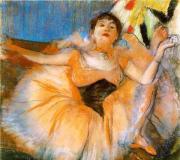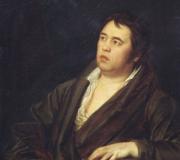Cultural studies for bachelors Kagan Solonin. Section iv
- Table of contents
- Chapter 7. Cultural values and norms....134
- 7.1. Values......134
- 7.2. Regulations and norms......142
- 7.3. Mental field of culture.....154
- Chapter 8. Intercultural communication and dialogue of cultures.....163
- 8.1. Communication......163
- 8.2. Integration, assimilation, acculturation.......164
- 8.3. Sociocultural communication.....170
- 8.4. Cultural traditions and innovations....173
- Chapter 9. Culture in social space.....183
- 9.1. Social institutions culture......183
- 9.2. Disciplinary-symbolic spaces of culture....188
- 9.3. Cultural modernization......193
- Control questions.......201
- Literature......202
- Section III. ONTOLOGY OF CULTURE
- Chapter 10. Regularities of the process of cultural genesis....... 205
- 10.1. From the biological form of being - to the anthropo-socio-cultural.......205
- 10.2. The place of culture in the system of existence and its structure....211
- 10.3. Culture and nature (nature, space)....222
- Chapter 11. Anthropological aspects of culture.......227
- 11.1. Culture and people......227
- 11.2. Culture and society.....239
- 11.3. Functioning of culture....246
- 11.4. Historical dynamics existence of culture......252
- Test questions......257
- Literature......258
- Section IV. TYPOLOGY OF CULTURE
- Chapter 12. Typological characteristics of cultures......261
- 12.1. Culture and cultures. The problem of typology......261
- 12.2. Traditional and innovative cultures...263
- 12.3. M. Mead: postfigurative, cofigurative and prefigurative cultures....267
- 12.4. Yu. Lotman: semiotic types of cultures....270
- 12.5. Subculture and counterculture......278
- 12.6. Mass and non-mass culture.....286
- Chapter 13. Ethnic, national and regional typology of cultures....... 296
- 13.1. People, ethnicity, nation.....296
- 13.4. Regional typology of culture.....302
- Chapter 14. Historical typology of culture....315
- 14.1. Cultural eras: Eurocentric approach......315
- 14.2. Local sociocultural worlds.......332
- 14.3. Laws of history and cultural development.....333
- Contents 5
- Chapter 15. Historical features Russian culture.....338
- 15.1. "East-West".....338
- 15.2. Christian-Orthodox beginning of culture.......340
- 15.3. Byzantine-imperial ambitions and messianic consciousness......341
- 15.4. From cultural isolation to integration with European culture.....343
- 15.5. The gap between ethnic and national cultures.....346
- 15.6. Tradition and modernity....349
- Test questions......356
- Literature......356
- Section V. CULTURE IN THE MODERN WORLD
- Chapter 16. Modern World culture....359
- 16.1. The decisive role of the European cultural tradition in world culture.....360
- 16.2. Main features of modern world culture......368
- 16.3. Modern cultural situation as a transitional era......378
- Chapter 17. Main cultural trends in the era of globalism.... 387
- 17.1. Trends in cultural universalization in the world modern process 387
- 17.2. Models of cultural universalization......404
- 17.3. Culture and global problems modernity......426
- Test questions......439
- Literature......440
- Section VI. MAIN SCHOOLS AND DIRECTIONS OF CULTURAL STUDIES
- Chapter 18. Development of cultural thought from the era of enlightenment to the beginning of the twentieth century...443
- 18.1. Philosophy of culture of the era European Enlightenment....444
- 18.2. Evolutionism as a theory of culture.....454
- 18.3. Problems of culture in the “philosophy of life” ....... 459
- Chapter 19. Historical typology of cultures and the theory of local civilizations......476
- 19.1. N.Ya. Danilevsky on the diversity of cultural and historical types....477
- 19.2. O. Spengler on the historical typology of world culture.....482
- 19.3. A. Toynbee on local civilizations in the history of world culture....492
- 19.4. P.A. Sorokin on the typology and dynamics of culture....503
- Chapter 20. Main cultural movements of the twentieth century.......516
- 20.1. Frankfurt School......516
- 20.2. Postmodernism......524
- Test questions......536
- Literature......536
- Glossary of terms.....537
- Personalities.... 551
Title: Culturology.
The proposed textbook is a comprehensive and systematic presentation of the main problems of cultural knowledge. It shows the specifics of cultural studies as an interdisciplinary science and as an academic discipline; ontological aspects of culture, its place in the structure of existence, problems of cultural typology are considered. Great place devoted to the analysis of the state of culture in the modern world.
The textbook fully complies with the State educational standard higher vocational education in the discipline "Culturology".
For undergraduates, graduate students and higher education teachers educational institutions.
Culturology has firmly become part of modern humanitarian knowledge. It is a necessary element of any serious education, and above all university education.
Although man has long realized the peculiarity of his existence, which distinguished him from natural world into a specific environment he himself created, for a long time he could not find accurate means of describing and understanding this specificity. It was necessary whole line prerequisites of an objective and subjective nature in order to comprehend a special sphere human existence and activities for its creation and development led to the emergence of cultural science. The emergence of cultural studies as an independent field of knowledge was preceded by the long development of sciences about man and society and the accumulation of facts and observations on his spiritual life. Unlike other areas of knowledge, cultural studies arose quite recently - about a hundred years ago. It became established in the education system of our country even later - over the last two decades.
The inclusion of cultural studies in the system of educational disciplines was a consequence of the wide recognition that, no matter what a person does, no matter what type of activity he devotes himself to, no matter what profession he prepares for, without knowledge of the basic concepts and problems of cultural studies, without understanding the laws cultural processes and especially without clear ideas about cultural perspectives of humanity, he will be like a blind man without a guide inside a labyrinth. Living in a culture and not knowing anything about it is criminal, because in this case every human action can turn out - and turns out! - destructive for culture. Therefore, in this textbook the idea is persistently pursued that cultural studies is basic science, but as academic discipline- a basic subject in the education and training system.
TABLE OF CONTENTS
Introduction 7
Section I. CULTURAL STUDY IN THE SYSTEM OF HUMANITIES
Chapter 1. Culture as a subject of study 13
1.1. The emergence of culture as an object of humanitarian knowledge 13
1.2. Aspects of cultural comprehension 15
1.3. The problem of culture specificity 19
1.4. Essential characteristics culture 22
Chapter 2. Structure of cultural studies 27
2.1. Cultural history 30
2.2. History of cultural studies 30
2.3. Sociology of culture 32
2.4. Cultural anthropology 34
2.5. Applied cultural studies 35
Chapter 3. Culturology and its interdisciplinary connections 37
3.1. Culturology and philosophy of culture 39
3.2. Culturology and philosophy of history 47
3.3. Culturology and cultural anthropology 54
3.4. Culturology and sociology of culture 57
3.5. Approaches to the study of culture 60
Test questions 66
Literature 66
Section II. BASIC CONCEPTS OF CULTURAL STUDIES
Chapter 4. Culture and civilization 69
4.1. Culture 69
4.2. Civilization 74
Chapter 5. Subject of culture 82
5.1. Subject of culture - person of culture: 82
5.2. Cultural self-identity 91
5.3. Enculturation and socialization 100
Chapter 6. Languages and cultural symbols, cultural codes(semiotics of culture) 110
6.1. Information-semiotic approach to culture 110
6.2. Main types of cultural sign systems 117
6.3. Secondary modeling systems 127
4 Contents
Chapter 7. Cultural values and norms 134
7.1. Values 134
7.2. Regulations and norms 142
7.3. Mental field of culture 154
Chapter 8. Intercultural communication and dialogue of cultures 163
8.1. Communication 163
8.2. Integration, assimilation, acculturation 164
8.3. Sociocultural communication 170
8.4. Cultural traditions and innovations 173
Chapter 9. Culture in social space 183
9.1. Social cultural institutions 183
9.2. Disciplinary and symbolic spaces of culture 188
9.3. Cultural modernization 193
Test questions 201
Literature 202
Section III. ONTOLOGY OF CULTURE
Chapter 10. Regularities of the process of cultural genesis 205
10.1. From the biological form of being - to the anthropo-socio-cultural 205
10.2. The place of culture in the system of being and its structure 211
10.3. Culture and nature (nature, space) 222
Chapter 11. Anthropological aspects of culture 227
11.1. Culture and people 227
11.2. Culture and society 239
11.3. Functioning of culture 246
11.4. Historical dynamics of cultural existence 252
Test questions 257
Literature 258
Section IV. TYPOLOGY OF CULTURE
Chapter 12. Typological characteristics of cultures 261
12.1. Culture and cultures. Typology problem 261
12.2. Traditional and innovative cultures 263
12.3. M. Mead: postfigurative, cofigurative and prefigurative cultures 267
12.4. Yu. Lotman: semiotic types of cultures 270
12.5. Subculture and counterculture 278
12.6. Mass and non-mass culture 286
Chapter 13. Ethnic, national and regional typology of cultures 296
13.1. People, ethnicity, nation 296
13.4. Regional typology of culture 302
Chapter 14. Historical typology of culture 315
14.1. Cultural eras: a Eurocentric approach 315
14.2. Local sociocultural worlds 332
14.3. Laws of history and cultural development 333
Contents 5
Chapter 15. Historical features of Russian culture 338
15.1. "East-West" 338
15.2. Christian-Orthodox beginning of culture 340
15.3. Byzantine-imperial ambitions and messianic consciousness 341
15.4. From cultural isolation to integration with European culture 343
15.5. The gap between ethnic and national cultures 346
15.6. Tradition and modernity 349
Test questions 356
Literature 356
Section V. CULTURE IN THE MODERN WORLD
Chapter 16. Modern world culture 359
16.1. The determining role of the European cultural tradition in world culture 360
16.2. Main features of modern world culture 368
16.3. The modern cultural situation as a transitional era 378
Chapter 17. Main cultural trends in the era of globalism 387
17.1. Trends in cultural universalization in the global modern process 387
17.2. Models of cultural universalization 404
17.3. Culture and global problems of our time 426
Test questions 439
Literature 440
Section VI. MAIN SCHOOLS AND DIRECTIONS OF CULTURAL STUDIES
Chapter 18. Development of cultural thought from the era of enlightenment to the beginning of the twentieth century in 443
18.1. Philosophy of culture of the European Enlightenment 444
18.2. Evolutionism as a theory of culture 454
18.3. Problems of culture in the “philosophy of life” 459
Chapter 19. Historical typology of cultures and the theory of local civilizations 476
19.1. N.Ya. Danilevsky on the diversity of cultural and historical types 477
19.2. O. Spengler on the historical typology of world culture 482
19.3. A. Toynbee on local civilizations in the history of world culture 492
19.4. P.A. Sorokin on the typology and dynamics of culture 503
Chapter 20. Main cultural movements of the twentieth century 516
20.1. Frankfurt School 516
20.2. Postmodernism 524
Test questions 536
Literature 536
Glossary of terms 537
Personalities 551
Culturology. Ed. Solonina Yu.N., Kagana M.S.
M.: Higher education, 2007 - 566 p.
The proposed textbook is a comprehensive and systematic presentation of the main problems of cultural knowledge. It shows the specificity of cultural studies as an interdisciplinary science and as an academic discipline; ontological aspects of culture, its place in the structure of existence, problems of cultural typology are considered. Much attention is paid to the analysis of the state of culture in the modern world.
The textbook fully complies with the State educational standard for higher professional education in the discipline “Cultural Studies”.
For undergraduates, graduate students and teachers of higher educational institutions.
Format: doc/zip
Size: 532 KB
Download / Download file 15
Format: pdf/zip
Size: 2.1 MB
Download / Download file 15 .07.2017, files deleted at the request of the publishing house "Urayt" (see note)
TABLE OF CONTENTS
Introduction......7
Section I. CULTURAL STUDY IN THE SYSTEM OF HUMANITIES
Chapter 1. Culture as a subject of study.....13
1.1. The emergence of culture as an object of humanitarian knowledge......13
1.2. Aspects of cultural comprehension......15
1.3. The problem of culture specificity.....19
1.4. Essential characteristics of culture.....22
Chapter 2. Structure of cultural studies....27
2.1. History of culture.....30
2.2. History of cultural teachings......30
2.3. Sociology of culture......32
2.4. Cultural anthropology......34
2.5. Applied cultural studies....35
Chapter 3. Culturology and its interdisciplinary connections.....37
3.1. Culturology and philosophy of culture......39
3.2. Culturology and philosophy of history.....47
3.3. Culturology and cultural anthropology.....54
3.4. Culturology and sociology of culture......57
3.5. Approaches to the study of culture......60
Test questions......66
Literature......66
Section II. BASIC CONCEPTS OF CULTURAL STUDIES
Chapter 4. Culture and civilization......69
4.1. Culture......69
4.2. Civilization.....74
Chapter 5. Subject of culture...82
5.1. Subject of culture - man of culture....:....82
5.2. Cultural self-identity......91
5.3. Enculturation and socialization......100
Chapter 6. Languages and symbols of culture, cultural codes (semiotics of culture)......110
6.1. Information-semiotic approach to culture.....110
6.2. Main types of cultural sign systems......117
6.3. Secondary modeling systems......127
4 Contents
Chapter 7. Cultural values and norms....134
7.1. Values......134
7.2. Regulations and norms......142
7.3. Mental field of culture.....154
Chapter 8. Intercultural communication and dialogue of cultures.....163
8.1. Communication......163
8.2. Integration, assimilation, acculturation.......164
8.3. Sociocultural communication.....170
8.4. Cultural traditions and innovations....173
Chapter 9. Culture in social space.....183
9.1. Social cultural institutions......183
9.2. Disciplinary-symbolic spaces of culture....188
9.3. Cultural modernization......193
Test questions......201
Literature......202
Section III. ONTOLOGY OF CULTURE
Chapter 10. Regularities of the process of cultural genesis....... 205
10.1. From the biological form of being - to the anthropo-socio-cultural.......205
10.2. The place of culture in the system of existence and its structure....211
10.3. Culture and nature (nature, space)....222
Chapter 11. Anthropological aspects of culture.......227
11.1. Culture and people......227
11.2. Culture and society.....239
11.3. Functioning of culture....246
11.4. Historical dynamics of cultural existence......252
Test questions......257
Literature......258
Section IV. TYPOLOGY OF CULTURE
Chapter 12. Typological characteristics of cultures......261
12.1. Culture and cultures. The problem of typology......261
12.2. Traditional and innovative cultures...263
12.3. M. Mead: postfigurative, cofigurative and prefigurative cultures....267
12.4. Yu. Lotman: semiotic types of cultures....270
12.5. Subculture and counterculture......278
12.6. Mass and non-mass culture.....286
Chapter 13. Ethnic, national and regional typology of cultures....... 296
13.1. People, ethnicity, nation.....296
13.4. Regional typology of culture.....302
Chapter 14. Historical typology of culture....315
14.1. Cultural eras: a Eurocentric approach......315
14.2. Local sociocultural worlds......332
14.3. Laws of history and cultural development.....333
Contents 5
Chapter 15. Historical features of Russian culture.....338
15.1. "East-West".....338
15.2. Christian-Orthodox beginning of culture.......340
15.3. Byzantine-imperial ambitions and messianic consciousness......341
15.4. From cultural isolation to integration with European culture.....343
15.5. The gap between ethnic and national cultures.....346
15.6. Tradition and modernity....349
Test questions......356
Literature......356
Section V. CULTURE IN THE MODERN WORLD
Chapter 16. Modern world culture....359
16.1. The determining role of the European cultural tradition in world culture.....360
16.2. Main features of modern world culture......368
16.3. The modern cultural situation as a transitional era.......378
Chapter 17. Main cultural trends in the era of globalism.... 387
17.1. Trends in cultural universalization in the global modern process 387
17.2. Models of cultural universalization......404
17.3. Culture and global problems of our time......426
Test questions......439
Literature......440
Section VI. MAIN SCHOOLS AND DIRECTIONS OF CULTURAL STUDIES
Chapter 18. Development of cultural thought from the era of enlightenment to the beginning of the twentieth century...443
18.1. Philosophy of culture during the European Enlightenment....444
18.2. Evolutionism as a theory of culture.....454
18.3. Problems of culture in the “philosophy of life” ....... 459
Chapter 19. Historical typology of cultures and the theory of local civilizations......476
19.1. N.Ya. Danilevsky on the diversity of cultural and historical types....477
19.2. O. Spengler on the historical typology of world culture.....482
19.3. A. Toynbee on local civilizations in the history of world culture....492
19.4. P.A. Sorokin on the typology and dynamics of culture....503
Chapter 20. Main cultural movements of the twentieth century.......516
20.1. Frankfurt School......516
20.2. Postmodernism......524
Test questions......536
Literature......536
Glossary of terms.....537
Personalities.... 551




